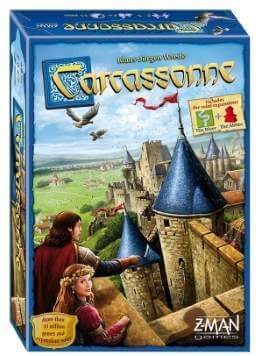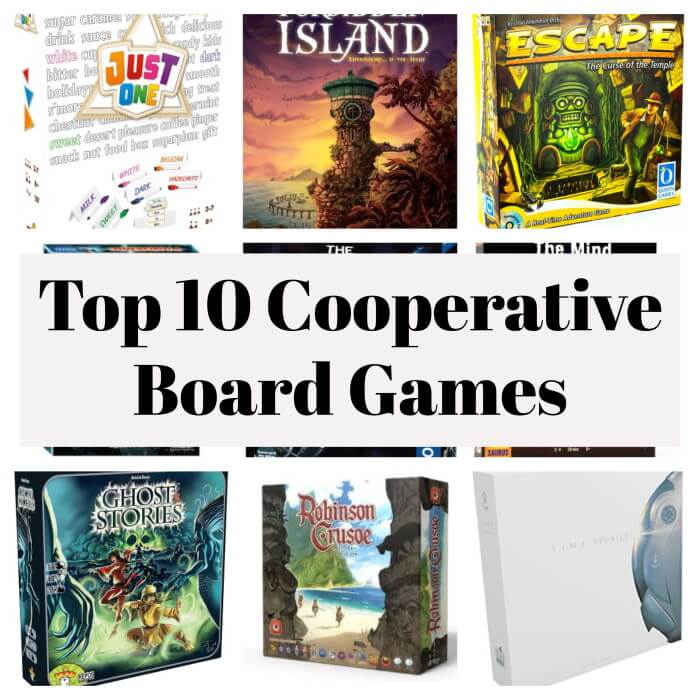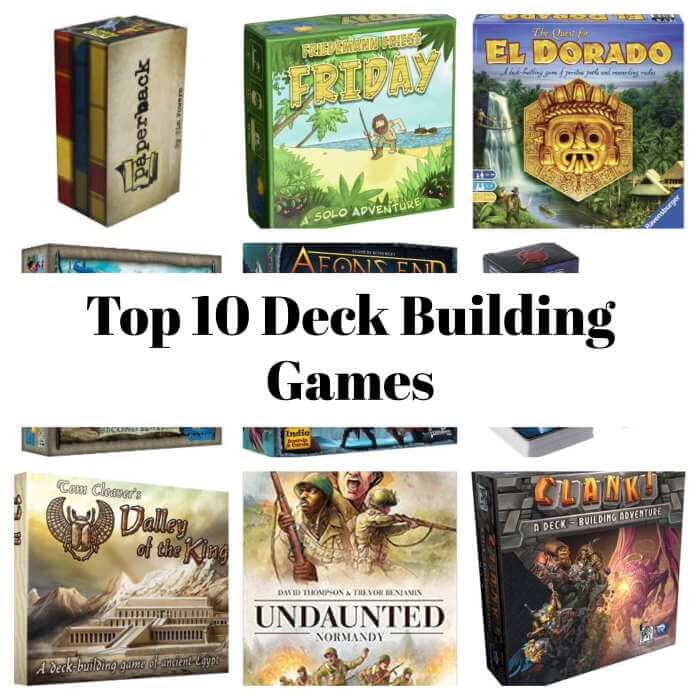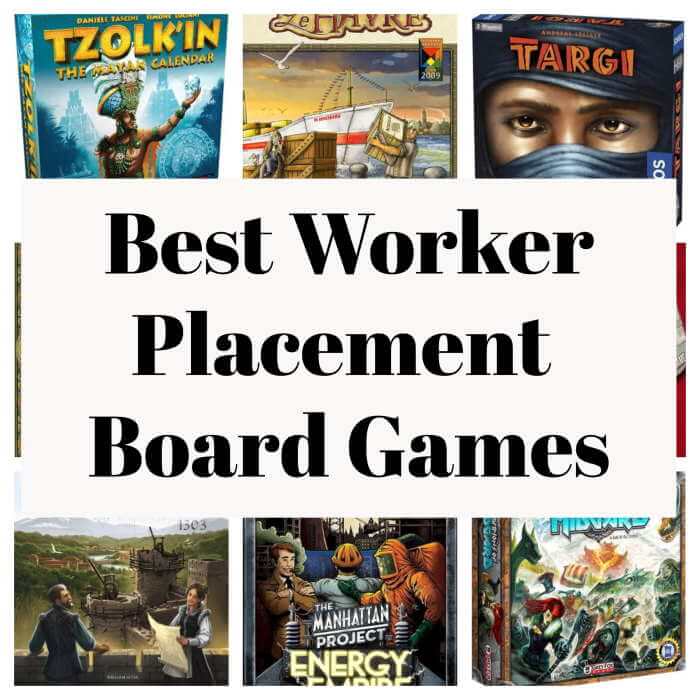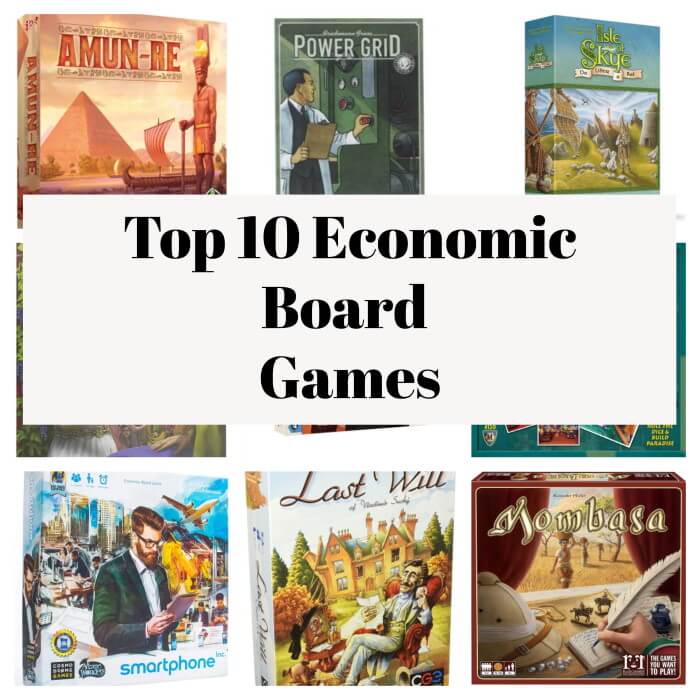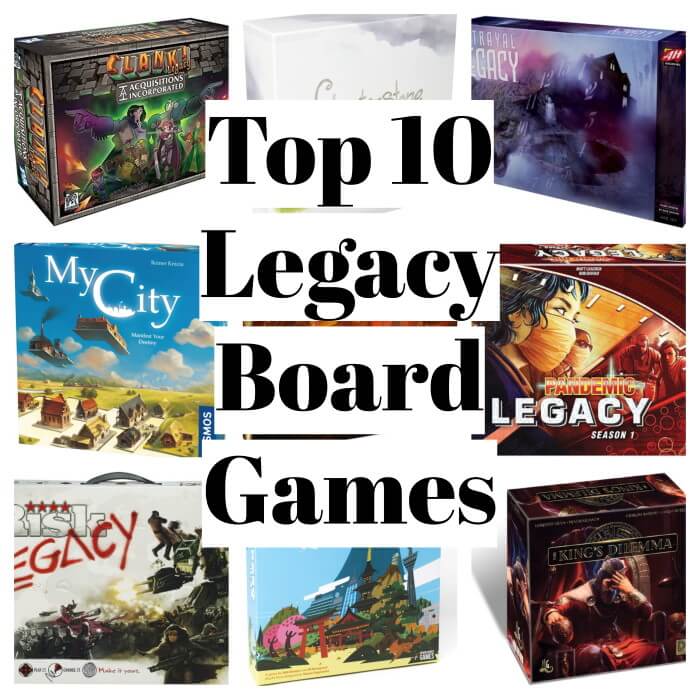Tile Placement Board Games – Our Top Picks
Check out these recommendations in this Best Tile Placement Games roundup. Carefully selected for various player types and preferences.
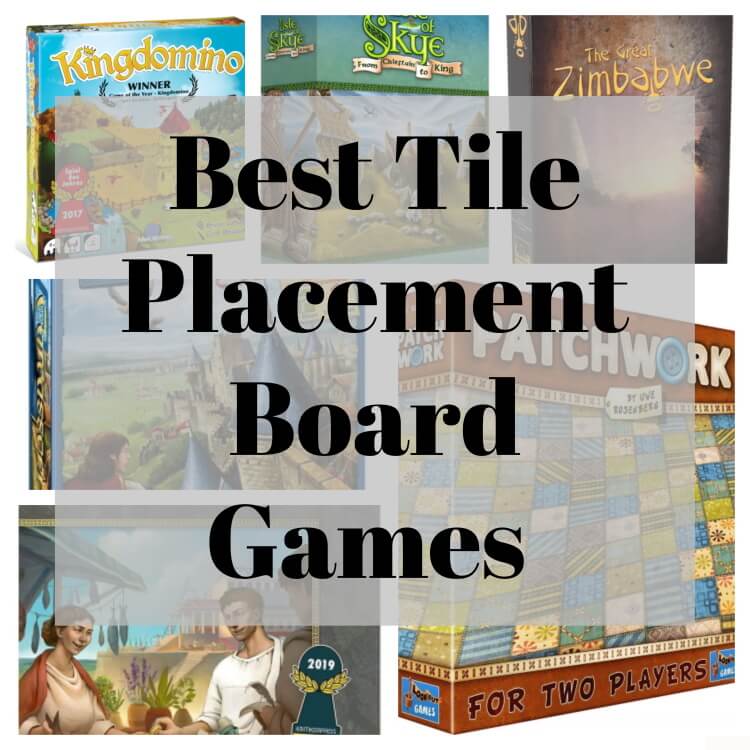
1. Carcassonne – Best Gateway Game
It’s hard to imagine a list about best tile placement games that doesn’t include the one that has managed to maintain its popular status as a quintessential gateway-style board game since it was released in 2000. With thousands of new board game releases each year, Carcassonne is still a game that people continue to bring to the table. So what is it about this game that is so great, especially for people new to the hobby?
With thousands of new board game releases each year, Carcassonne is still a game that people continue to bring to the table.
Carcassonne at a Glance
| Game Type Tile Placement City and Territory Building Medieval Theme | Play Time 45 mins | Skill/Complexity (2 - 5) Light |
| Age 8+ | Publisher(s) Hans im Glück and others | Published 2000 |
| Categories Family / 2 Player | Players 2 - 5 | Rules Manual Official Rules PDF |
| Our Rating 9.5/10 | Cost $24.99 + |
For one, it is easy to teach. With just a few core rules you really need to know to jump in and start playing the game (draw a tile, place the tile by matching terrain, and claim a structure if there is no other meeple present) means that new players can learn as they go. The game starts out small – with a single tile in the middle of the table – and physically expands over the course of the game, meaning that when a new player draws a tile, an experienced gamer at the table can explain what their options are. By the end of the game, they will have a very firm grasp on the possibilities.
The game also has a nice visual presence at the end of the game, and new players will often comment that it feels satisfying to have built a large map on the table, with many cities, roads, fields, and monasteries.
Lastly, the game can be either a multiplayer solitaire experience (i.e., “I’ll build over here, and you build over there, and we won’t bother each other”), or a fierce competitive experience (i.e., “Hey, you stay away from my city! What are you doing??). The competitive nature of the game isn’t immediately apparent, but as soon as new players discover the hidden possibilities, many have lightbulb moments that make the experience of teaching the game also very rewarding.
– Related: Best Gateway Board Games
2. Isle of Skye – Best Next Step Game
Isle of Skye, the Kennerspiel des Jahres winner from 2016, is the perfect game to follow Carcassonne on this list. In many ways, Isle of Skye feels similar in that players place tiles and match terrain in order to build a kingdom and score points, yet it adds just enough depth and complexity to make it an excellent game to introduce to gamers who have some experience with games like Carcassonne or Ticket to Ride, but are looking for a little “more” in a game.
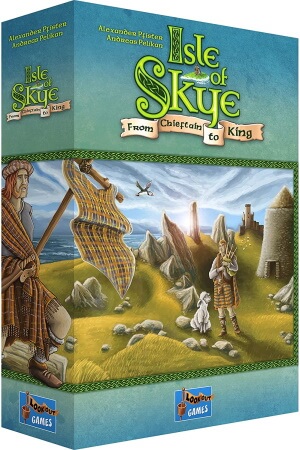
Isle of Skye at a Glance
| Game Type Economic, Auction/Bidding, Catch the Leader, Set Collection, Tile Placement, Turn Order: Progressive | Play Time 30 - 50 mins | Skill/Complexity (2.5 - 5) Light - Medium |
| Age 8+ | Publisher(s) Mayfair Games and Others | Published 2015 |
| Categories Strategy / Family | Players 2 - 5 | Cost $31.99 |
| Our Rating 8.8/10 |
For one, Isle of Skye introduces an auction mechanism. Instead of simply drawing a single tile to add to a map, players draw 3 tiles and then must secretly pick 1 tile that will get thrown back into the bag and will not be available this round, and they will also set the price of the other 2 tiles. Players then have a chance to purchase another player’s tile at the cost dictated by the player. If a player has tiles that are unpurchased by other players in the round, they receive those tiles and pay the amount of money they had set.
For one, Isle of Skye introduces an auction mechanism. Instead of simply drawing a single tile to add to a map, players draw 3 tiles and then must secretly pick 1 tile that will get thrown back into the bag………….
Also, instead of adding tiles to one central kingdom, players in Isle of Skye build an individual kingdom and score points based its tiles and configuration at the end of each round, as well as gain income at the beginning of each round based on the number of whiskey barrels that connect back to their main castle via road. At the beginning of the game, random scoring objectives are drawn, and in each round a different combination of scoring objectives will be evaluated, which makes Isle of Skye a fairly strategic game that rewards long-term planning.
The level of interaction between players that the auction mechanism brings in really can create some tough decisions in terms of how to price certain tiles. Do you price a tile low to entice other players to purchase them? Do you price valuable tiles high to ensure no other player buys it, but then potentially lose a good sum of money to secure those points? These are questions you must ask, but it’s not enough to feel overwhelming.
3. Patchwork – Best 2 Player Game
Uwe Rosenburg is well known for heavy resource-management Euro games like Agricola, Caverna, Le Havre, and a Feast for Odin, but he also designs many games on the opposite end of the complexity spectrum, many of which feature tile placement as a core mechanism. Perhaps is most popular among these titles is Patchwork, a game designed exclusively for 2 players.
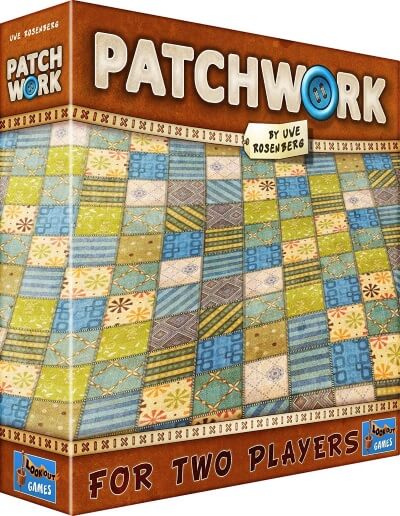
Patchwork at a Glance
| Game Type Abstract Strategy Puzzle Tile Placement | Play Time 15 - 30 mins | Skill/Complexity Rating (1.7 - 5) Non-Complex |
| Age 8+ | Publisher(s) Mayfair games, Lookout games and others | Published 2014 |
| Categories Abstract Strategy 2 Player Games | Players 2 | Patchwork Related How to Play Patchwork (rules & instructions) Description and Review |
| Our Rating 9.5/10 | Cost $27.99 approx |
Though the theme is certainly abstract, it is one that has broad appeal – players attempt to piece together the best quilt, and what is there to not love about that? The rules are also very simple in that on a player’s turn, they select a tile, pay its associated cost (i.e., buttons and/or time), and then place it on their player board.
What makes Patchwork a game that can be quite addicting to non-gamers and hobby gamers alike is that it will have a familiar feel to people who haven’t played many modern board games but do enjoy puzzles or the classic computer game Tetris. Moreover, players who do enjoy more complex board games will appreciate that this game has just enough depth to satisfy their hunger for a game with challenging decisions.
To be successful in Patchwork, players must successfully balance the need to fill in their board with ensuring they generate enough button income throughout the game. To select a tile in Patchwork, a player must pay a number of buttons indicated on the tile and also move up their player marker up a time track depending on the number listed. Tiles also have button symbols, and when a player’s marker passes one of those symbols on the time track, they receive buttons equal to the number of button symbols present on their player board.
The time track itself is also interesting in that whoever is furthest back on the time track gets to take the next turn. This can actually allow a player to go multiple times in a row if, at the end of their turn, they are still further back than their opponent. Instead of grabbing a tile, a player instead can move their marker up the time track until it lands at the next space past their opponent to receive buttons equal to the number of spaces they advanced.
The game ends once both players have reached the end of the time track, meaning that players have limited time to fill in their board. At the end of the game, after taking one last income, players count up all their buttons and then subtract 2 points for each empty space on their board. It can be very challenging to get a high score which is what makes this game so much fun for a wide range of gamers!
4. Kingdomino – Best 15-Minute Game
Perhaps even easier to teach than Carcassonne, Kingdomino is a game that you are guaranteed to be able to pull out in just about any gaming scenario. Given its level of accessibility, it’s no wonder that this game designed by Bruno Cathala won the Spiel des Jahres award in 2017. While I would still personally recommend Carcassonne over Kingdomino as an all-around solid gateway game, I think Kingdomino can hold a very special place in a gamer’s collection as a quick 15-minute game that is both fun and strategic.
I think Kingdomino can hold a very special place in a gamer’s collection as a quick 15-minute game that is both fun and strategic.
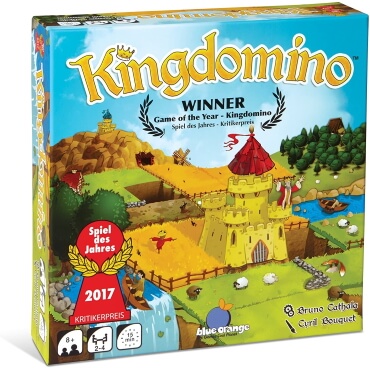
| Game Type City Building, Medieval Theme, Territory Building, Card Drafting, Pattern Building, Tile Placement | Play Time 15 mins | Skill/Complexity (1.3 - 5) Light |
| Age 8+ | Publisher(s) Blue Orange Games and others | Published 2016 |
| Categories Family | Players 2 - 4 | Cost $19.95 |
| Our Rating 8.6/10 |
A turn in Kingdomino is dead simple: you pick a tile, place the tile into your kingdom, and then pick another tile – and the overall goal is to score the most points based on your terrain sections at the end of the game. Within this basic game system, however, are some really cool choices.
Take, for example, the act of picking a tile. At the beginning of the game, 4 random tiles are drawn with numbers on the back. The tiles are sorted in numerical order and then flipped over. Player order is determined at random, with the first player putting a meeple of their color on a tile of their choice, and then continuing in this fashion until all players have picked one tile (or two, in the case of a 2 player game). Then, each player in top-down order will place their domino into their kingdom following the rule that at least one side of their domino must match an adjoining domino in terms of terrain. After placing their domino, the active player will then pick from a brand new set of 4 domino tiles for the next round. In this sense, players must balance selecting good tiles (i.e., ones that will score points) with securing a good position in turn order. In a 4 player game, going last means that you will by default have to take the tile no one else wants, which can really hurt.
Tile placement is a little tricky too. Players can have a maximum grid size of 5×5 in their kingdom, meaning that the game starts with a sense of openness but, without careful planning, players can potentially lock themselves into a corner where tile placement options are either very limited or non-existent.
Once players have worked through all tiles in the box, players get points for each terrain section by multiplying the number of squares in that section by the number of crown icons present in that section. The player with the most points wins!
If you are looking for an ultra-quick tile-placement game that you could teach to anyone anytime, it’s hard to beat Kingdomino in this regard.
5. The Castles of Burgundy – Best Game with Fun Combos
A slightly heavier game to make this list, The Castles of Burgundy by Stefan Feld has become a well-known title among fans of mid-weight Euro strategy games, and rightfully so – there is certainly a lot to enjoy about this game. If you don’t mind a bit of themelessness in your game, and you are looking for a game with some very rewarding combos, this is definitely a game you’ll want to try at least once.
The Castles of Burgundy at a Glance
| Game Type Medieval Theme, Territory Building, Dice Rolling, Hexagon Grid, Tile Placement | Play Time 30 - 90 mins + | Skill/Complexity (3 - 5) Light to Medium Great Strategy Intro Game |
| Age 12+ | Publisher(s) Ravensburger | Published 2011 |
| Categories Strategy | Players 2 - 4 (2 - 3 is Ideal) | Manual Official Rules PDF |
| Our Rating 9/10 | Cost approx $34.99 |
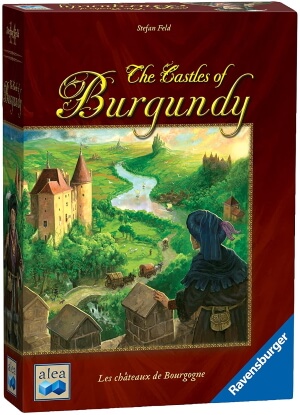
In The Castles of Burgundy, players take turn using dice to perform actions, and the value of the dice will determine the types of actions they can do. The main goal is to fill in an estate on a personal player board with tiles of different terrain types, each of which will provide different kinds of bonuses and points when placed.
What makes The Castles of Burgundy a fun game is the satisfying turns players can achieve throughout the course of the game. At the beginning of the game, players will start with small bonuses, but as players fill in their estate, the tiles will all begin to combo off each other by providing lots of points and additional bonus actions. And while you can pay attention to your opponents in attempt to block them from making powerful moves, this is also a game where you can kind of just relax and do your own thing and see how your plans work out. The choice is yours!
The iconography learning curve might seem slightly daunting to new players, but the rulebook serves as a great reference guide and it’s fairly easy to catch on quick, especially since only a limited number of tiles are available each round to choose from.
6. Azul – Best Abstract Game
Azul is another Spiel-des-Jahres winning title to make this list, and another wonderful game that fits perfectly into the family game genre, or one that you can bring around in many varieties of gaming settings. Yes, Azul does have a theme in the sense that you are trying to build a mosaic, but the game itself is fairly abstract in that it involves grabbing tiles of a color and filling in a grid on a personal player board. Yet there is something that really tends to hook people into this game and keep them coming back; this truly does feel like an evergreen game that people will be playing for many years to come.
Yes, Azul does have a theme in the sense that you are trying to build a mosaic, but the game itself is fairly abstract…………
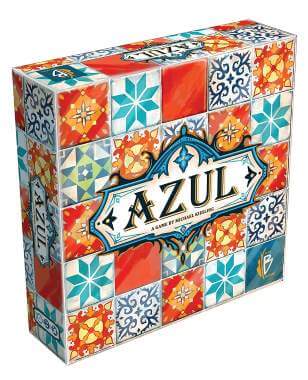
Azul at a Glance
| Game Type Renaissance Theme Abstract Card Drafting Pattern Building Tile Placement | Play Time 30 - 45 mins | Skill/Complexity (2.5 - 5) Good Medium - Light Abstract Strategy |
| Age 8+ | Publisher(s) Plan B Games and Others | Published 2017 |
| Categories Family / Teens / Abstract Strategy | Players 2 - 4 | Manual EN-Azul-Rules PDF |
| Our Rating 9.5/10 | Cost Approx $29.99 |
Azul is a fairly straight-forward game in the sense that players take turns drafting brightly-colored tiles from the center of the table and adding them onto their player board. It can be very tricky though as the game progresses, and that’s because the options in terms of where players can place tiles on their board becomes increasingly limited.
When players take tiles from the center of the table, they must take all of the tiles of one color from that particular spot. When they add them to their player board, they must select an available row. The row must have space to fit their tiles, have no other tiles of other colors, and not be a row where that player previously placed that color. If there are leftover tiles, these “drop” to the bottom of the player’s board and count as negative points at the end of the round.
At the end of the round, a player will look at all of their completely-filled rows, and move the right-most tile onto their mosaic on the matching space (the rest get discarded). At that moment, the player will score 1 point for each tile it connects to in its column (including the tile itself), and 1 point for each tile it connects to in its row (including the tile itself). At the end of the game, players also gain points for completed rows or columns, or for completing all mosaic spots for a given color.
The game can actually be fairly cutthroat in the sense that you can put other players in a place where they have to draw a lot of one particular color but without any place to put it, causing them to score a lot of negative points. But the game can also be very visually fulfilling as you fill in your mosaic and see the end-product of all your hard work. This game is certainly a delight and one worth checking out!
7. Carpe Diem – A Game with Very Unique Scoring
Carpe Diem is a game designed by the same designer as The Castles of Burgundy, Stefan Feld, who is well known for making games that allow you to score points in a multitude of ways. Carpe Diem is no exception – this is a game where you are trying to score points by completing a variety of objectives – but the way that players compete for who scores what is something quite unique and makes this game definitely stand out from other tile-placement games.
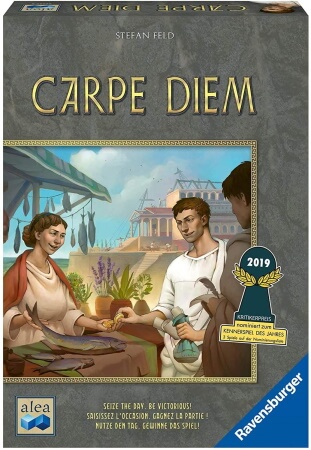
Carpe Diem at a Glance
| Game Type Ancient Theme, Area Movement, Contracts, End Game Bonuses, Open Drafting, Tile Placement, Variable Set-up | Play Time 45 - 75 mins | Skill/Complexity (2.5 - 5) Medium |
| Age 10 + | Publisher(s) Alea and Others | Published 2018 |
| Categories Strategy | Players 2- 4 | Cost $39.99 approx. |
| Our Rating 8.2/10 |
The central focus of Carpe Diem is a rondel where players will take turns moving their player piece around to collect tiles to place onto their board in order to build the best city district in ancient Rome. In the older version of the game, players moved their piece around a star pattern, but later versions simply have players move their pieces around the circle because someone with far too much time on their hands discovered that mathematically these patterns are identical.
As you complete structures of different types, those structures will gain you bonuses like resources or cards that score you points at the end of the game. When players cover up a banderole tile, they will move the marker of their color up the banderole track. And the banderole track is very important when it comes to scoring.
At the end of each round (of which there are four), players, in banderole track order, will have a chance to place on of their scoring disks on an empty circle space between two scoring cards on the game board. These scoring cards are arranged in a grid and the exact configuration and number of cards depends on player count. Each scoring card will give players points for a certain item/resource or buildings within their district and players will score both cards that their marker sits between. Once a player has claimed a scoring spot, that spot is blocked off from other players for the rest of the entire game.
In other words, even if you are doing great at collecting a certain resource or building a certain building type, you could miss out on a ton of points if another player manages to block the spot you need on the scoring cards!
The rules to Carpe Diem are very easy to grasp, and the game plays relatively quick. If you enjoy a Euro game with a bit of competition, this is one that you may very well enjoy.
8. Teotihuacan: City of Gods – Best Heavy Board Game
Teotihuacan, while technically not a game that is entirely focused on tile placement, does have a very (quite literal) central tile-placement aspect that is a very visually-stunning tile-stacked pyramid in the center of the game board. This is a significant aspect of the game, which makes it eligible for this list; after all, when people think of this game, the tile pyramid is one of the first things most people will mention.
Teotihuacan, while technically not a game that is entirely focused on tile placement, does have a very (quite literal) central tile-placement aspect………
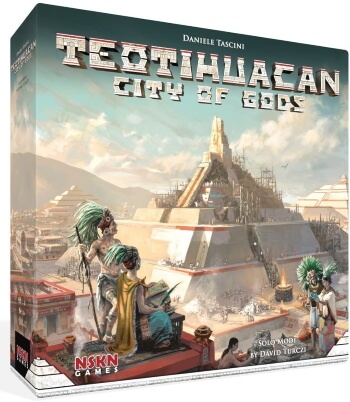
| Game Type Ancient Theme, Area Movement, Solo/Solitaire, Tile Placement, Worker Placement with Dice Workers | Play Time 90 - 120 mins | Skill/Complexity (4 - 5) Heavy |
| Age 14+ | Publisher(s) NSKN Games and Others | Published 2018 |
| Categories Strategy | Players 1 - 4 | Cost $49.95 approx |
| Our Rating 9/10 |
In Teotihuacan, players compete to gain the greatest number of VPs by doing things like contributing to the city’s pyramid, developing technologies (moving up tracks), and building houses. The main idea of the game is that players take turns moving worker-dice around a giant rondel in order to perform actions.
On a player’s turn, they choose one of their dice, and move it 1-3 spaces, and the space they land on will determine what type of action they can take. To make things more tricky, actions will become more powerful at a given location based on the number of dice they have at that spot at the time the action is triggered. And to make things even more tricky, players will have to pay cocoa for opponents’ dice present on that action spot. And to make things even more absolutely mind-melting, the power of an action will also depend on the value of the dice present; many times, players have to increase the value of a dice after performing an action. If, at any point, a player’s dice would move from 6 to 1, it “ascends” to the heavens and is re-incarnated back to a starting space (the player also gets a special bonus when this happens). All of this to say, Teotihuacan is a game that takes a lot of focus and planning in order to be successful.
If this seems like enough to make your brain explode, just know that this game is incredibly fun if you can relax and be fine with knowing you may not unlock the perfect strategy in the first game, and just enjoy exploring what the game has to offer. The tile-placement aspect of the game in particular can be quite fun as it requires you to decide which tile to place and how to configure it in order to score the most post and also which track to advance up. When placing a tile on top of another tile, players will get 1 VP for each symbol that matches the one below it. If that symbol is of a particular color, the player also gets to move up the respective-colored track, potentially unlocking points and bonuses.
There’s so much to love about this game, and if you are looking for a heavy Euro game that features a tile-placement mechanic, this is an easy go-to pick.
9. The Great Zimbabwe – Best Economic Game
Splotter Spellen is a Dutch publisher run by game designers Joris Wiersinga and Jeroen Doumen, and they are well known for big, heavy, and long Euro strategy games like Food Chain Magnate, Antiquity, and Roads & Boats that often go out of print and can be quite expensive to track down. The Great Zimbabwe is one of their well-known titles which just got a reprint and should be available at the time of this article through online retailers. Its availability certainly makes it an excellent game for this list as it has a really fascinating game design and mechanisms and is relatively accessible in terms of complexity and game length.
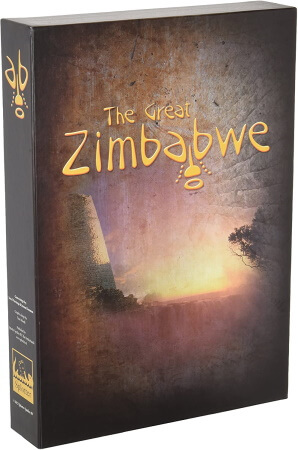
The Great Zimbabwe at a Glance
| Game Type Ancient Theme, Civilization, Economic, Industry/ Manufacturing, Transportation | Play Time 90 - 150 mins | Skill/Complexity (3.7 - 5) Heavy |
| Age 14 + | Publisher(s) Splotter Spellen | Published 2012 |
| Categories Strategy | Players 2- 5 | Cost $99.99 approx. |
| Our Rating 8.5/10 |
In The Great Zimbabwe, players take on the role of leaders of ancient African kingdoms attempting to build the most prosperous civilization on the continent by building monuments in order to score VPs. What is really interesting about this game is that players are attempting to reach their VP requirement the fastest in order to win, but each player’s VP requirement can change throughout the game. All players start the game with a VP requirement of 20, but, any given player could have a VP requirement between 20 to 40 by the end of the game depending on the god card, technology cards, and specialist cards they might acquire. The end of the game is triggered when any player reaches their VP requirement, and if multiple players do this in the same round, the winner of the game will be the one who overshot their goal by the most VPs.
There is definitely a lot going on in The Great Zimbabwe, but the main idea is that players attempt to place craftsmen and build monuments by using resources. Each of these are represented by tiles and monument markers that players place on the main game board, and abiding by tile-placement rules and restrictions that require players to really think ahead and strategize because where you place things really matter in this game – you really need to balance helping yourself and helping others because you can earn income (cattle) when other players access your craftsmen.
Cattle is the main currency of the game, and players must manage their cattle wisely. Players also have a chance to set the price that everyone must pay to access their craftsmen (including themselves). Having cattle is important to be able to perform actions, but it’s also important for turn order. At the beginning of each round, players bid for turn order with cattle, and going first can put a player at a serious advantage.
This game also has asymmetric god powers, and players can gain access to one of these if they choose to do so (gaining a god card increases a player’s VP requirement). These powers can really bolster a player’s strategy and have a profound impact on gameplay in terms of approaches players take each time they play the game.
Despite being quite a mentally-involved game, The Great Zimbabwe currently sits at a 3.70 out of 5 complexity rating on BoardGameGeek (compared to 4.20 for Food Chain Magnate). The game can be played in about 90 minutes, and it scales well from 2 to 4 players.
10. Escape: The Curse of the Temple – Best Real-Time Game
Sometimes there are games that come along that serve as great reminders why the board game hobby is so incredible – it allows us to share experiences with friends and families around the table, build stories together, and connect in a way that is unique and memorable outside of the typical daily life settings. Few games really manage to capture the essence of this than Escape: The Curse of the Temple, a game that will have you screaming, concentrated, and jumping up with excitement all within 10 minutes.
Few games really manage to capture the essence of this than Escape: The Curse of the Temple, a game that will have you screaming, concentrated, and jumping up…….
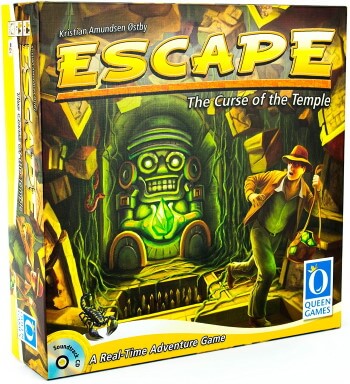
Escape: The Curse of the Temple at a Glance
| Game Type Adventure, Exploration, Cooperative,, Dice Rolling, Real-time, Modular Board, Push Your Luck, Tile Placement, Solo/Solitaire Game | Play Time 10 mins | Skill/Complexity (1.5 - 5) Light |
| Age 8+ | Publisher(s) Queen Games and Others | Published 2012 |
| Categories Family | Players 1 - 5 | Cost $59.99 |
| Our Rating 8.4/10 |
How many games can you honestly say take only 10 minutes to have a fully immersive experience, where the outside world blurs away? Escape is a game that does just that, and part of it is thanks to the fact that the game’s timer is an actual soundtrack, full of fast-paced tempos that will make you always feel like you are running short on time.
In Escape, players work together to explore an ancient cursed temple for treasure and escape in time before it’s too late. The game board initially consists of just a few tiles, but players will slowly build up the game board by exploring new tiles that they will draw and add to the map on the table. From the moment the soundtrack starts to the moment it stops, players all simultaneously roll dice repeatedly, and as fast as they possibly can, using symbols drawn to perform actions, such as moving between tiles, discovering new tiles, and gathering gems.
Players work together in the sense that they can save other players – for instance, if a player rolls a black mask symbol, that dice is locked until they roll a gold mask symbol. Eventually, a player can become completely locked and must then be saved by another player. Players can also share dice within the same room if they are trying to collect gems, so sometimes it is advantageous to try and have multiple players end up in the same room.
Once players have collected some gems, they can attempt to escape, and players will win the game if everyone manages to exit the temple by rolling enough keys. The number of keys required is equal to the number of uncollected gems plus one; essentially, players have to discover as many gems as possible to make exiting the temple easier.
The fact that this game is so quick and so full of energy makes for an incredible experience that can’t easily be matched with turn-based games. Even if you’re a gamer who hates a lot of luck in games, there is something about Escape that is just plain fun and hard not to like. Once you’ve beat the base game, there are also expansion modules included in the base game, namely the curse and treasure tiles that can mix the game up and add an extra challenge. Like most other Queen games, Escape also has a ton of “Queenie” mini modular expansions that you can throw in as you see fit. All around, Escape is an incredibly fun game!
